FLOWERS
Best 13 Useful Flowers You Should Grow in The Garden
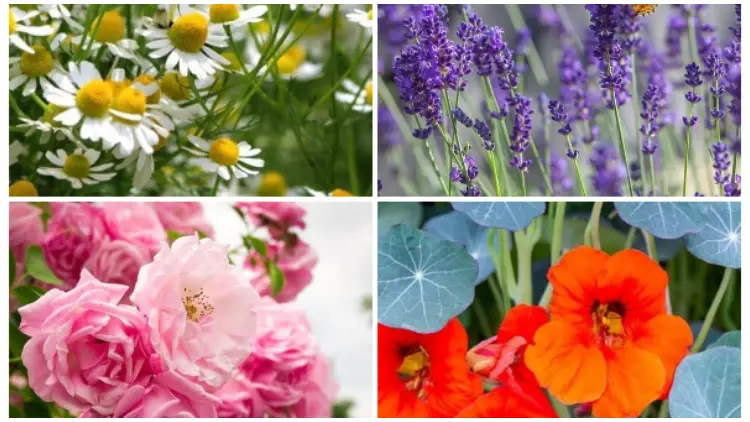
With the natural beauty of flower species, they are not only perfect gifts for decoration but also useful. Whether you use them in medicine, cooking, cosmetics, or gardening, they will bring a lot of different uses that not everyone knows. From its leaves to flowers, this plant has something that everyone can enjoy. And here are the Best 13 Useful Flowers You Should Grow In The Garden with so many benefits and potential uses. It’s easier than you think to whip up natural remedies straight from the garden.
1. Chamomile (Matricaria recutita)
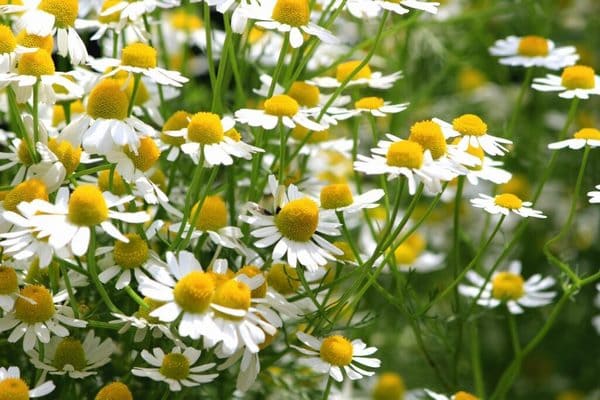 Image source: plantura.garden
Image source: plantura.garden
Chamomile bears an abundance of bright, white apple-scented flowers that can be used in a myriad of ways. Maybe, you’ve already familiar with the tea and its soothing capabilities. But this flower can also help ease menstrual pain, and its anti-inflammatory and antifungal properties make it a great skincare ingredient. For the garden, this highly-scented flower keeps all sorts of pests away, including moth caterpillars and even deer.
How to grow: Chamomile is incredibly easy to grow, it will happily self-seed itself each year if you leave a few of the flowers to fall where it grows. This flower isn’t too fussy about soil or water, but it doesn’t like intense heat, so if your summers are particularly hot, it will probably wilt when the temperatures soar.
2. Lavender (Lavandula)
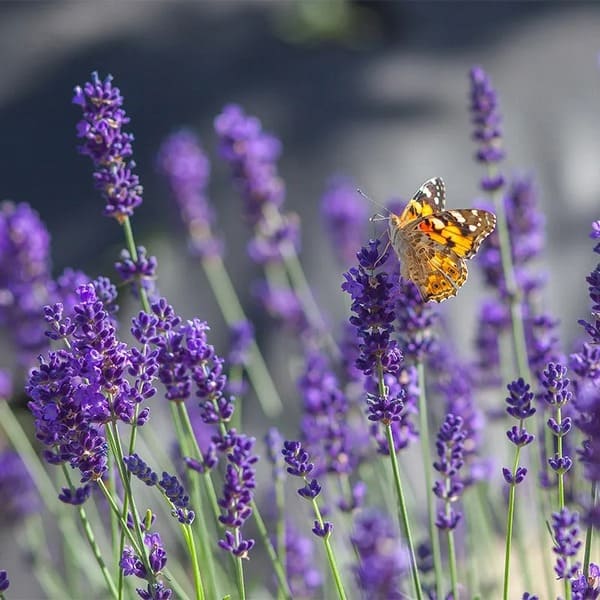 Image source: americanmeadows
Image source: americanmeadows
You can use the flowers of Lavender for sachets or sprinkle them in drawers and closets, and your clothes will smell lovely. For cooking, lavender also is a great ingredient for lavender tea, lavender cookies, and even lavender ice cream. And a lavender-scented bath sound lovely is perfect too!
How to grow: Lavender needs bright, full sun to do best. Make sure you choose something that drains quickly for soil, as the roots can rot if left in moist soil. They prefer to be quite dry and don’t do well in wet areas.
3. Roses (Rosa)
 Image source: gardenia
Image source: gardenia
Roses (Rosa) not only bring beautiful buds but their petals (provided you don’t spray your plants with chemicals) are edible and be dried and added to teas, potpourri, or bath salts. You can make rose hip tea, rosehip honey, and several things from these vitamin C-packed berries. Harvest them after a frost or two, and they will be sweeter.
4. Nasturtiums (Tropaeolum)
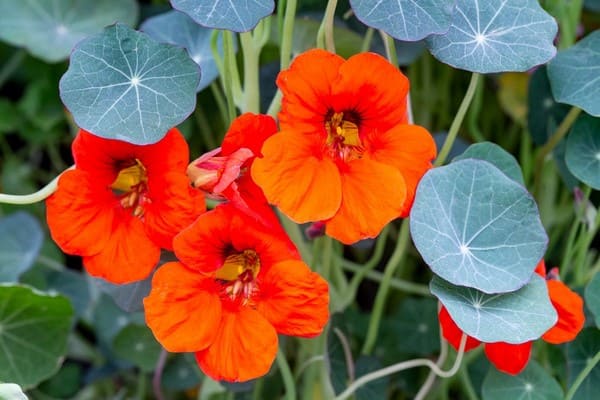 Image source: gardenersworld
Image source: gardenersworld
Nasturtiums (Tropaeolum) display delicate-looking flowers beautiful, but they are useful. They are edible and tasty, their peppery leaves make a delicious addition to salads and the flowers are for a pop of color. They are incredibly easy to grow, and they’re prolific, filling in with lovely green leaves and brightly colored flowers. They are the ultimate trap crop flower, so be sure to plant them wherever you have issues with aphids or flea beetles.
How to grow: Nasturtiums grow well in full sun and aren’t particularly picky about soil but they need to be watered consistently to flourish.
5. French Marigolds (Tagetes patula)
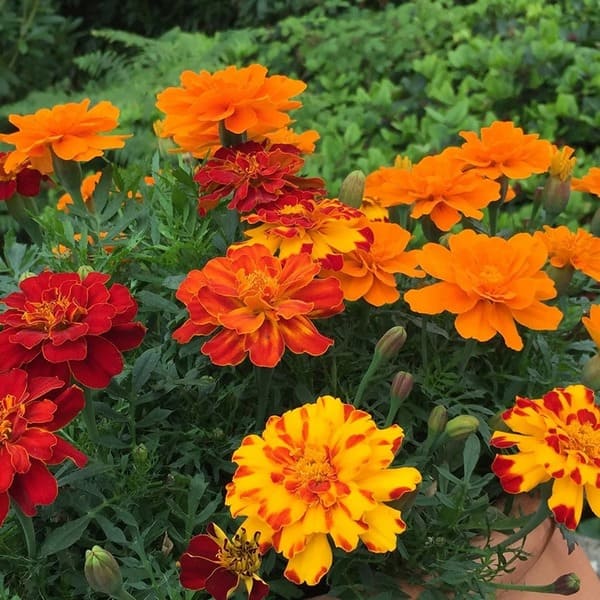 Image source: waitrosegarden
Image source: waitrosegarden
French Marigolds (Tagetes patula) are a tomatoes’ great companion plant. Their beautiful russet and orange flowers deserve a place in every vegetable garden for their ability to deter pests. For cooking, you can eat the petals, tossing them in soups and salads for a bit of color. Its petals make an excellent natural yellow food coloring or dye too.
How to grow: Marigolds are so popular because they are easy to grow. They don’t need anything special where the soil is concerned, regular rainfall, ad full sun will keep these flowers happy.
6. Purple Coneflower (Echinacea)
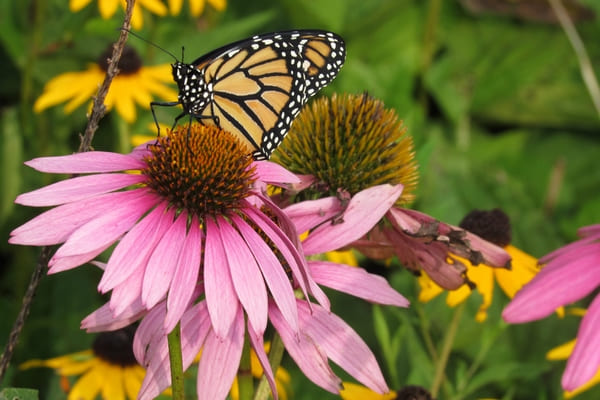 Image source: westsidenewsny
Image source: westsidenewsny
Purple Coneflower (Echinacea) is preferred to grow with its immune-boosting powers, but it’s also a great flower if you want to keep the deer out because of its prickly tops. Its flower heads with the seeds attract finches to come to visit your garden.
How to grow: Coneflower needs bright, full-sun, and well-draining soil. They are drought resistant and don’t need any watering regularly.
7. Borage (Borago officinalis)
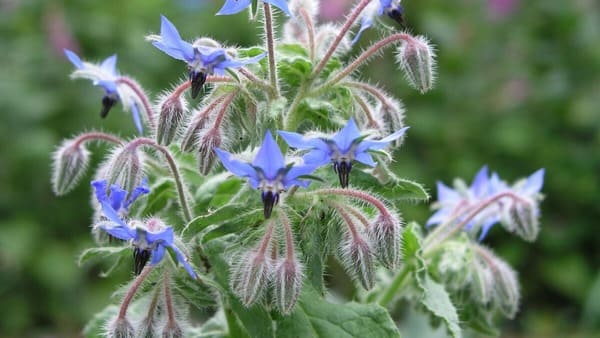 Image source: mygarden
Image source: mygarden
The Borage is a lovely herbal flower that showcases beautiful blue flowers that pop against their background of green. In the garden, borage helps to keep tomato hornworms away and repels cabbage moth caterpillars too. Or you can even make a fertilizing tea with borage to add potassium to the soil. In cooking, its flowers are pretty tasty in salads, with their fresh flavor as cucumber taste. Medicinally, borage is well known for treating depression, so when you’re feeling down, try a soothing cup of borage tea.
How to grow: Borage It is incredibly easy to grow from seed and is pretty drought-resistant. and isn’t a picky plant. It isn’t a picky plant but does just fine in full sun and partial shade.
8. Pansy (Viola tricolor)
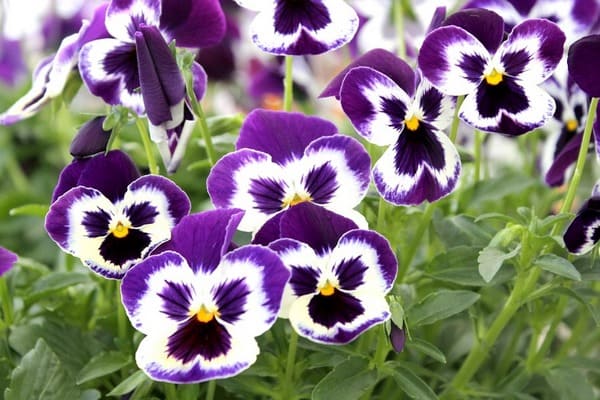 Image source: newgarden
Image source: newgarden
Pansy (Viola tricolor) is a favorite edible flower and is a great addition to buttercream cupcakes. If you’ve got a dry cough and want to loosen things up a bit, make a cup of tea with some pansy flowers as pansies contain mucilage which helps get things moving. Or also consider making a facial toner using pansies as the flowers contain salicylic acid, which is well known for its benefits in treating acne.
How to grow: Grow your pansies somewhere they will receive full sun in rich and loamy, well-draining soil. Keep their soil moist if you want happy plants with many blossoms.
9. Geraniums (Pelargonium)
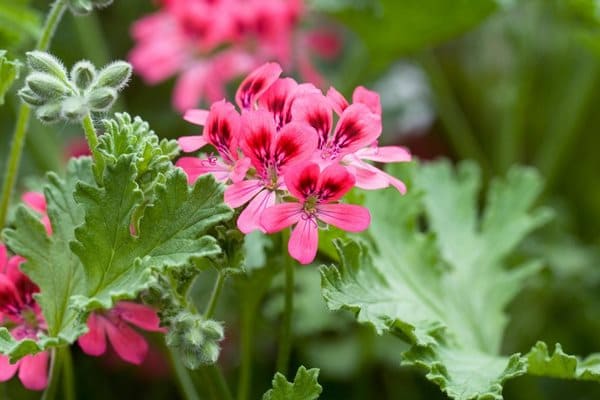 Image source: gardendesign
Image source: gardendesign
Geraniums (Pelargonium) have lovely green foliage, often with different shades of green or white on the leaves, and their brightly colored flowers pop against this green background. Apart from bringing pretty petals that will beautify your patio, they will also help keep mosquitoes away naturally, with no smelly candles or chemical sprays. And in the garden, you can use them as an excellent trap crop.
How to grow: Geraniums need full sun to partial shade and rich, loamy soil. Keep the soil moist, and they will grow happily.
10. Violets (Viola odorata)
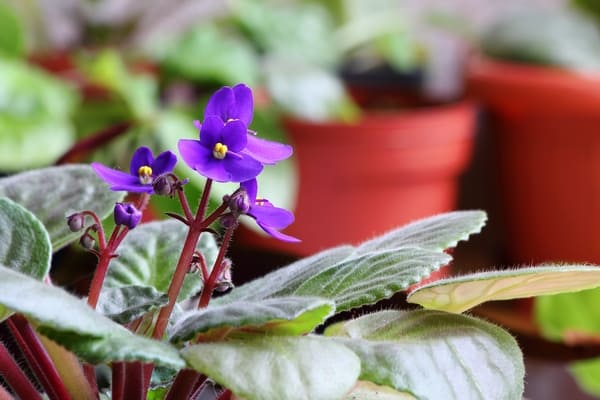 Image source: espoma
Image source: espoma
Violets (Viola odorata) feature sweet flowers that make such a beautiful addition to your lawn. The color is beyond stunning, and it’s always a great way to kick off the arrival of warm and sunny weather. Aside from enjoying a pretty carpet of purple and white blooms in your yard, you can eat these delicate flowers. You can try making some candied violets or tossing the dark, glossy leaves in a salad.
How to grow: Violets grow best in moist soil and will happily grow in full sun or partial shade.
11. Dandelion (Taraxacum)
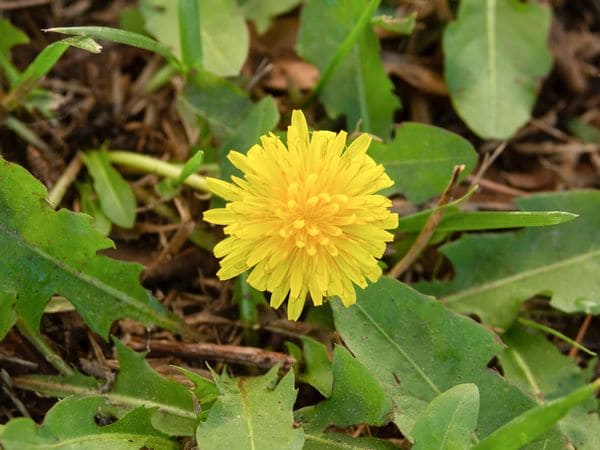 Image source: thespruce
Image source: thespruce
Dandelion (Taraxacum) is popularly known as a weed, but it is edible. Instead of spending your money and energy to get rid of them, there are many ways to use them as nearly all parts of the plant are edible and delicious, even good for you. Dandelion greens on a pizza, dandelion-infused oil, and roasted dandelion root coffee are so great! You could make a batch of dandelion bitters to use as a digestive aid or in your favorite cocktail.
How to grow: All that helps it grow well is to stop fighting!
12. Sunflowers (Helianthus)
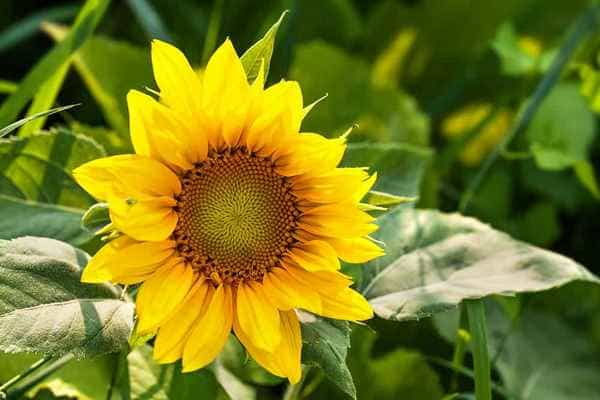 Image source: peppershomeandgarden
Image source: peppershomeandgarden
Sunflowers make a great addition to flower beds with their large, colorful heads and also attract birds to your backyard. Their seeds make a great snack and are packed full of vitamins too. Whether you want a smaller sunflower, there are plenty of dwarf varieties to choose from.
How to grow: Sunflowers are an annual flower that requires full sun to do well. Water the seedlings when they first emerge, then they will happily grow without your assistance. Beyond that, they are scrappers and don’t need any special soil or fertilizer.
13. Calendula (Calendula officinalis)
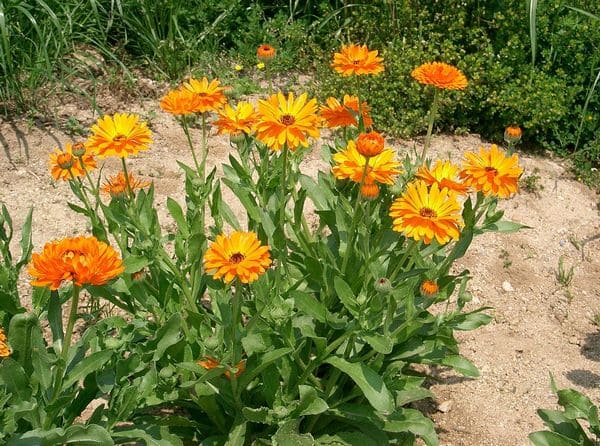 Image source: wiktionary
Image source: wiktionary
Calendula (Calendula officinalis) is a cheery flower with blooms that range from pale orange to deep brick red. And if you love natural skincare, grow calendula! The flower is used in all kinds of tonics, toners, moisturizers, and salves as it is incredibly nourishing and gentle on your skin. Calendula is anti-inflammatory, antifungal, and antibacterial. It’s used to help treat wounds and soothe irritated skin. In the garden, you can grow it as a trap crop for aphids and as a companion plant to repel whiteflies. Or boost the pollination process, plant calendula near your zucchini, tomatoes, and ground cherries.
How to grow: Calendula is easy to grow and thrives on neglect and less than stellar nutrients. Grow it in any spot in your yard, and your calendula will be happy there.
FLOWERS
15 Best Fragrant Flowers That Bloom at Night
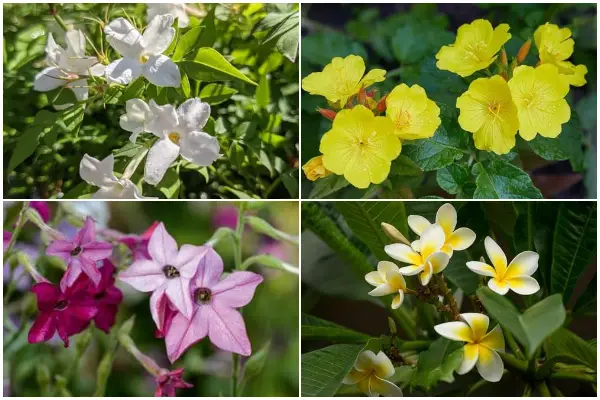
Whether indirect or direct sun, most plants need a source of light for their growth, but there are some flowering plants that can bloom in the dark of the evening. Especially, they emit a smell stronger and sweeter at night.
Here are the 15 Best Fragrant Flowers That Bloom at Night to add to your yard with a natural, sweet-smelling ambiance.
1. Gardenias
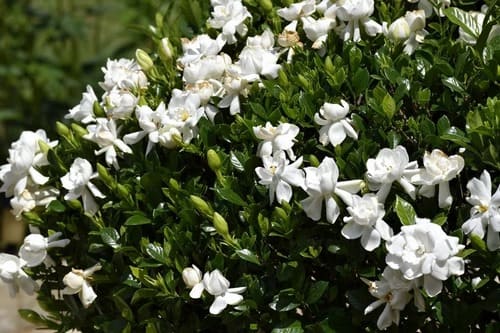 Image source: gardendesign
Image source: gardendesign
Gardenias not only display strongly scented white flowers but also bring glossy, bright green leaves. They grow easily in containers and raised beds.
2. Jasmine
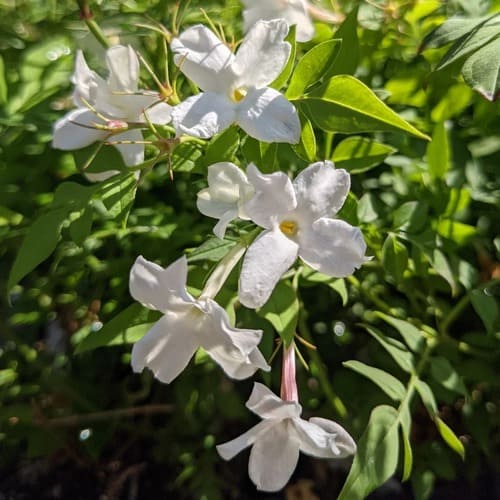 Image source: easytogrowbulbs
Image source: easytogrowbulbs
Most jasmines have fragrances. They are vining shrubs that grow quickly if given good soil and regular sunlight.
3. Plumeria
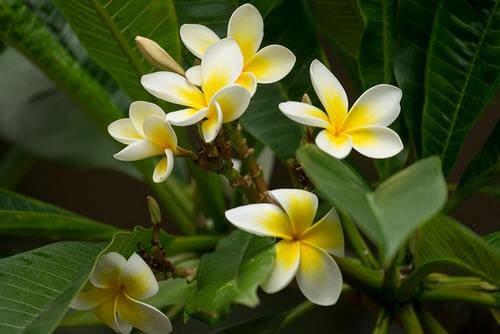 Image source: animals.sandiegozoo
Image source: animals.sandiegozoo
Plumeria is grown as a shrub or small tree in warm climates. The sweet-scented flowers with elegant colors ranging from white to yellow to pink and variegated. Its blooming time lasts from spring through fall.
4. 4 O’Clock
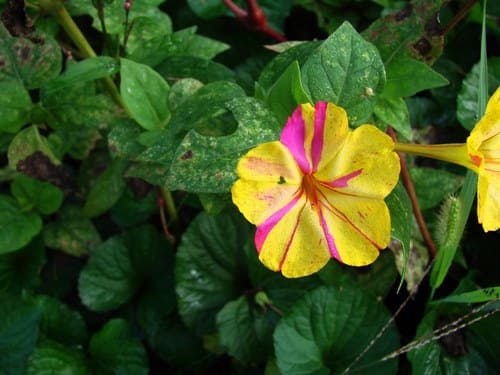 Image source: flickr
Image source: flickr
This flower ranges in a variety of colors such as yellow, red, pink, white, and variations thereof. They are mounding plants that reach heights of 3 to 4 feet. It grows happily in full sun and requires little water.
5. Moonflower
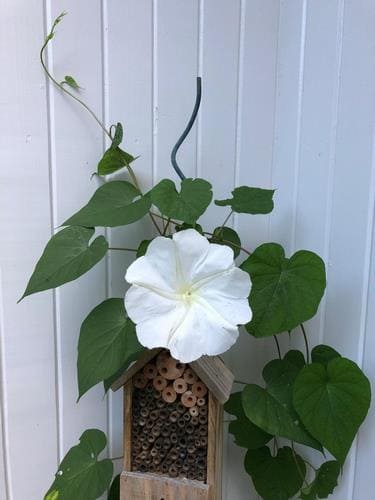 Image source: pilotonline
Image source: pilotonline
Moonflower showcases white flowers appearing in the evening. The flowers are visible and extremely fragrant throughout the night. The leaves also look beautiful with heart-shaped, and the blooms resemble funnels. It is a fast-growing vine, you can grow it and take advantage of its shade for an arbor, patio roof, gazebo, or trellis.
6. Yellow Evening Primrose
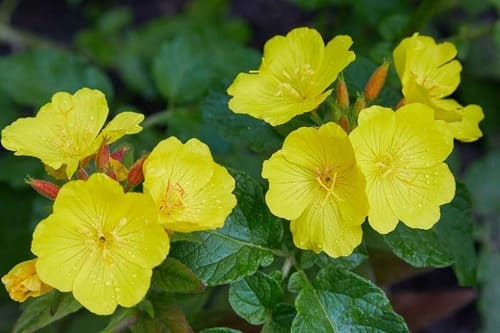 Image source: gardenia
Image source: gardenia
Yellow Evening Primrose offers yellow flowers that attract moths, hummingbirds, honeybees, and bumblebees, which pollinate the primrose. This flower is easy to grow and does well in planting zones from 5 – 8.
7. Angel’s Trumpet
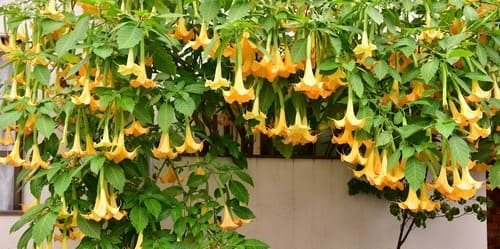 Image source: marthastewart
Image source: marthastewart
Angel’s Trumpet offers trumpet-shaped flowers in white, pink, or yellow. Its fragrance emits at night. It grows well in sun or shade and needs regular watering
8. Mexican Orange
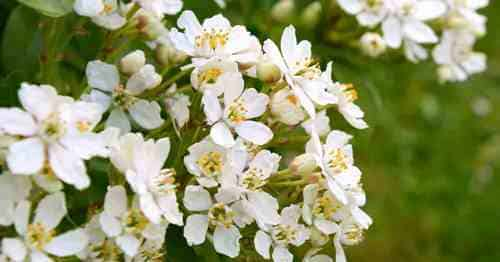 Image source: plantcaretoday
Image source: plantcaretoday
Mexican Orange brings clusters of sweet-smelling white flowers that resemble orange blossoms just like orange jasmine attracting bees. The flowers open in late winter or early spring and bloom continuously for a few months, then intermittently throughout the summer.
9. Flowering Tobacco
 Image source: gardensillustrated
Image source: gardensillustrated
The flowers of the plant open after dark, on cloudy days, and are especially fragrant at night. Its leaves are large, oval leaves, with sticky stems.
10. Evening Primrose
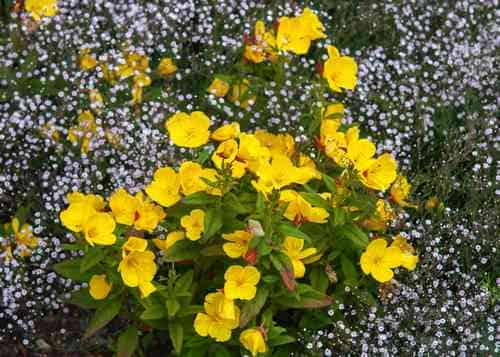 Image source: thespruce
Image source: thespruce
Evening Primrose can attract night-flying insects which are drawn to the flower’s lovely scent. From spring to autumn, white to pink blooms are heavy. The plant can tolerate drought and grows well in poor soil or rocky areas and likes full sun.
11. Casa Blanca Lily
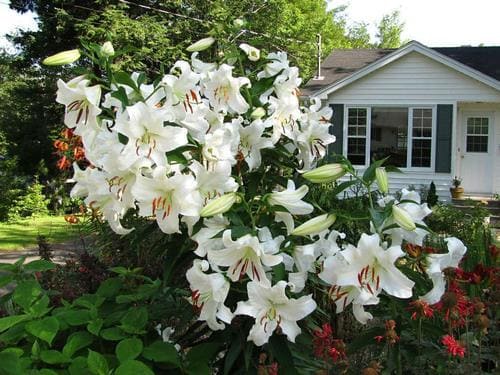 Image source: yourgardenspecialist
Image source: yourgardenspecialist
Casa Blanca Lily gives large white blooms with a sweet aroma. It looks great when planted in groups of three or five identical bulbs and grows happily in containers.
12. Hellebore
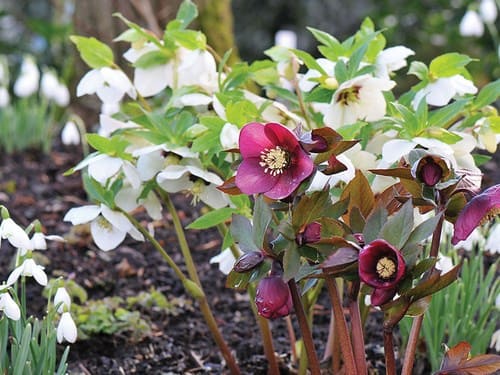 Image source: ashwoodnurseries
Image source: ashwoodnurseries
The flowers of most hellebores are shaped like bells or cups, either facing outward or drooping. It grows well in partial or full shade.
13. Wax Flower
 Image source: atozflowers
Image source: atozflowers
Wax Flower is a tropical plant that shows off waxy leaves and flower clusters. The flowers are creamy-white with a pink center and produce a lovely fragrance that is stronger at night. It is a slow-growing, woody vine and looks great in hanging baskets on patios and porches.
14. Kahili Ginger
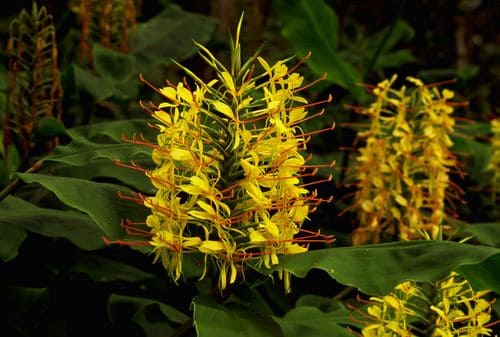 Image source: hawaiianflowers
Image source: hawaiianflowers
The flowers of Kahili Ginger are yellow with red stamens and produce a rich fragrance, especially during late summer evenings.
15. Heliotrope
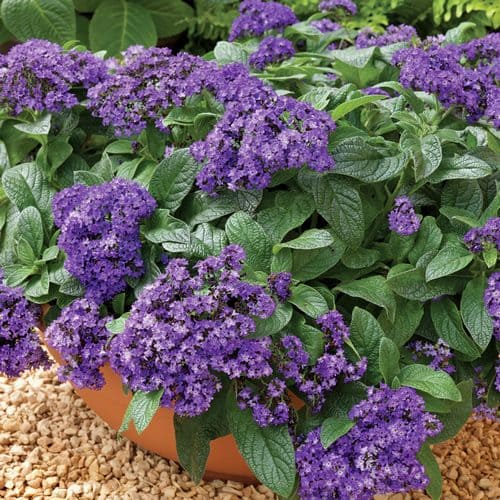 Image source: malmborgsinc
Image source: malmborgsinc
On summer days, the Heliotrope showcases flowers that come in purples, blues, violets, and whites. Most do well in pots and containers and need well-drained soil.
FLOWERS
15 Best Flowering Shrubs and Bushes for Colorful Landscape Year-round

Most of the shrubs and bushes are easy to grow and do not require taking care of. Better still, they can make your garden more beautiful as well as add some more interest to your yard more attractive. They bring gorgeous foliage and open beautiful blooms all season of the year to liven up all space they grow. Apart from bearing constant blooms, some of them can bloom for a long time to make your garden always full of colors.
1 Roses
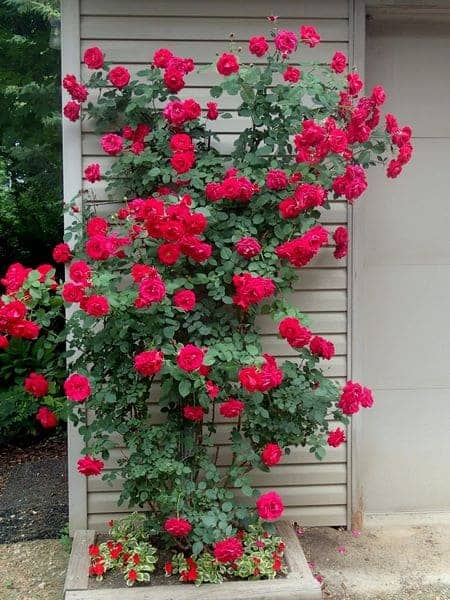 Image source: knechts
Image source: knechts
There are many different Rose varieties to choose from, so you can grow the type you love growing. Grow it as an informal hedge along a walkway or planting bed.
2 Rhododendron
 Image source: vecteezy
Image source: vecteezy
Rhododendron open blooms in a variety of hues in the spring. The red and pastel tints are the most widely available. Grow it for a specimen shrub, hedge, or woodland garden.
3 Mock Orange
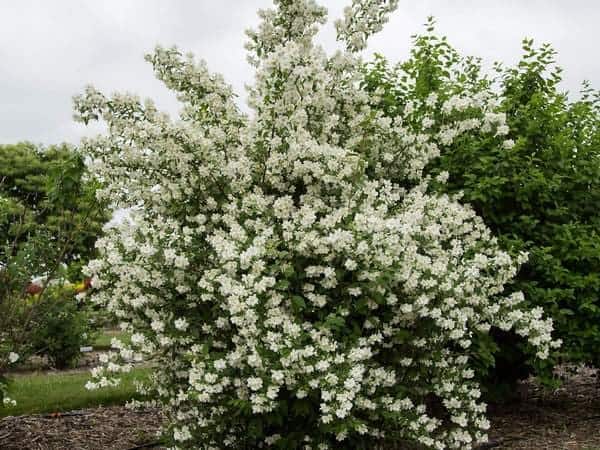 Image source: campbellsnursery
Image source: campbellsnursery
The blooms of Mock Orange spread sweet perfume. That’s the fragrance that its flowers release when they open in late spring to early summer. You can grow the plant for a walkway or patio where you can savor the fragrance.
4 Mountain Laurel
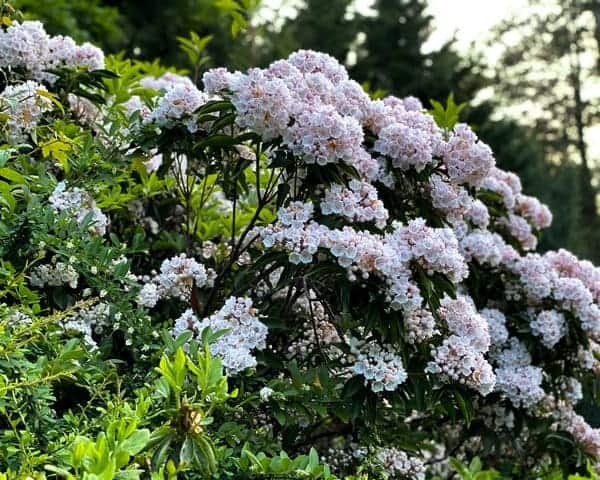 Image source: homesandgardens
Image source: homesandgardens
Mountain Laurel shows off pink buds in spring that open to white cup-shaped flowers. The plant is a stand-out evergreen shrub because it tolerates shade.
5 Lilac
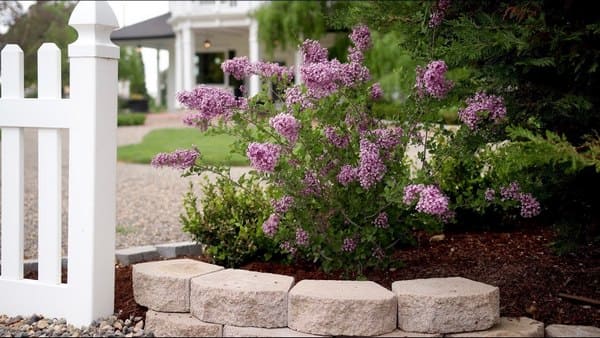 Image source: worldsterra
Image source: worldsterra
Lilac opens its flowers in late spring and early summer. Its flower timing, fragrance, and color depending on the variety. You can grow it for hedge or specimen shrub.
6 Bottlebrush Buckeye
 Image source: whatgrowsthere
Image source: whatgrowsthere
The flowering plant features long white flower spikes that appear in summer above the green leaves. Its flowers especially attract hummingbirds. Grow it for butterfly or wildlife gardens.
7 Azalea
 Image source: Azalea
Image source: Azalea
Azalea brings a rainbow of hues flowers in the spring. You can grow this flower in small varieties for bed edging or line a walkway, large trees for hedges, or in wildlife or woodland gardens.
8 Winter Heath
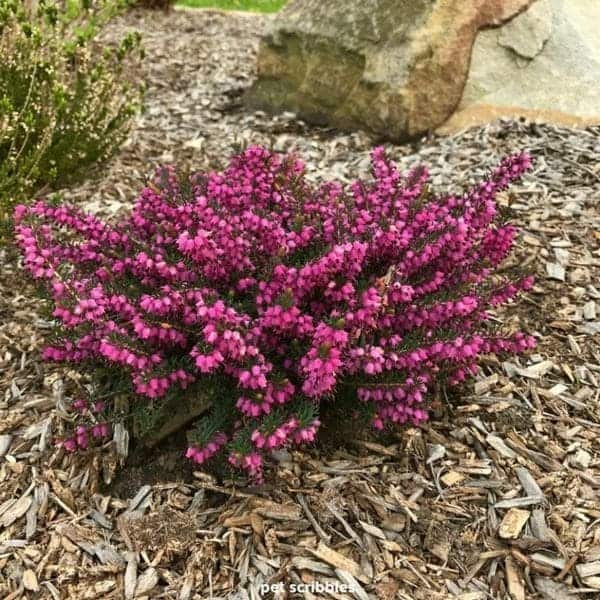 Image source: petscribbles
Image source: petscribbles
From winter into early spring, the Winter Heath offers bright blooms blanket ‘Kramer’s Red’ winter heath. And the plant has needle-like, evergreen leaves. Grow it for a groundcover or pair it with conifers for an eye-catching contrast.
9 Pieris
 Image source: provenwinners
Image source: provenwinners
Pieris showcases clustered, dangling blooms with bright pink colors. Its flowers open from deep red buds in late winter and early spring. You can grow it for a foundation planting, shrub border, or hedge.
10 Weigela
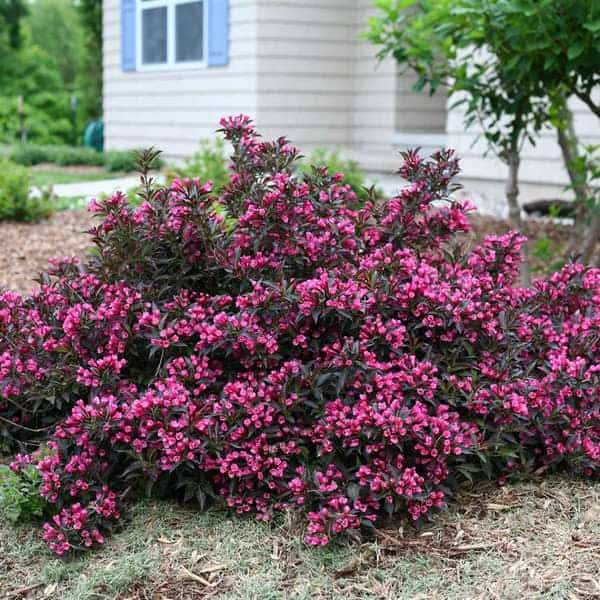 Image source: springmeadownursery
Image source: springmeadownursery
In late spring, Weigela shoots up pink blooms that sparkle against dark leaves and are a hummingbird favorite. You can grow it for perennial beds, wildlife gardens, and even containers.
11 Pineapple Guava
 Image source: flickr
Image source: flickr
Pineapple Guava opens incredibly exotic flowers that are perfectly edible, as is the fruit that ripens in fall. That makes it a great option for color as well as flavor.
12 Virginia Sweetspire
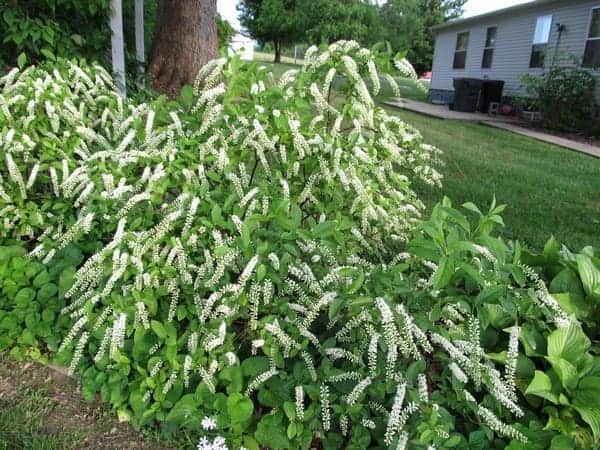 Image source: whatgrowsthere
Image source: whatgrowsthere
Virginia Sweetspire brings white flowers that open in spikes starting in early to mid-summer. Its blooms release a sweet fragrance and beckon pollinators like butterflies and bees. Grow it for butterfly or rain gardens.
13 French Hydrangea
 Image source: southernliving
Image source: southernliving
French Hydrangea opens large flower heads that appear in early summer and linger well past frost. The flowers come in different colors including pink, blue and white varieties. This plant gives its beauty to liven up for mixed planting beds, woodland gardens, or even containers.
14 Winter Daphne
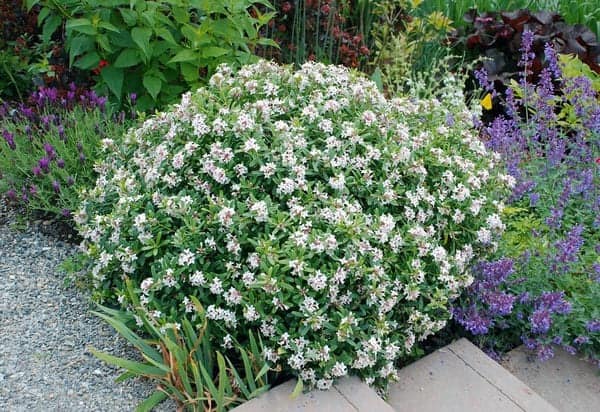 Image source: havlis
Image source: havlis
Winter Daphne displays pink flower buds that open to reveal white blooms bursting with perfume. Grow it in a dappled shade near an entry where you can savor the scent.
15 Abelia
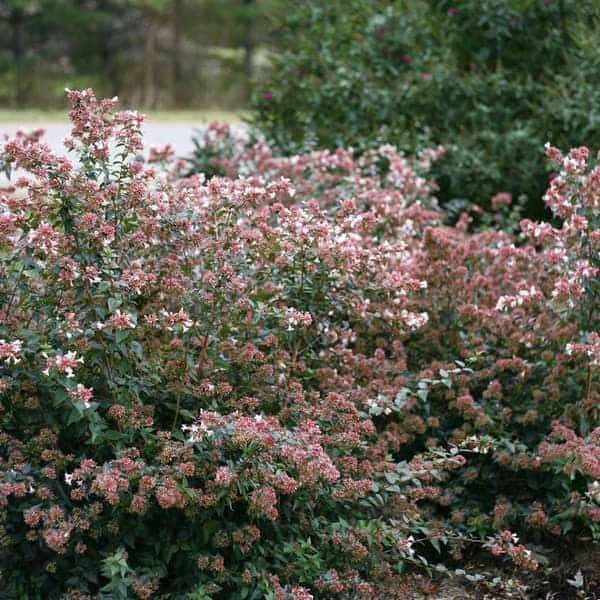 Image source: springmeadownursery
Image source: springmeadownursery
Abelia is a prolific bloomer lasting through summer and into fall. The pastel blooms come in shades of white, yellow, and pink. It is a tough plant so you can grow it easily.
FLOWERS
15 Beautiful Flowers with Their Meanings For Life

Looking for gifts to present someone special in the upcoming time such birthday or celebration, check out 15 Beautiful Flowers with Their Meanings below to choose a suitable flower for each purpose in special events.
Each flower has its own beauty and also has its own meaning. There are flowers that represent friendship while others symbolize love. With these meanings, flowers always are chosen as gifts to send messages as well as express feelings to relatives and friends.
1. Daisies
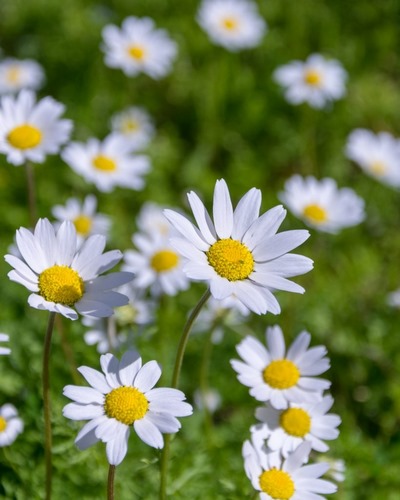 Image source: lovingly
Image source: lovingly
Daisies signify purity, innocence, loyalty (especially in love), beauty, simplicity and patience. There are also overtones of love conquering all.
2. Hyacinths
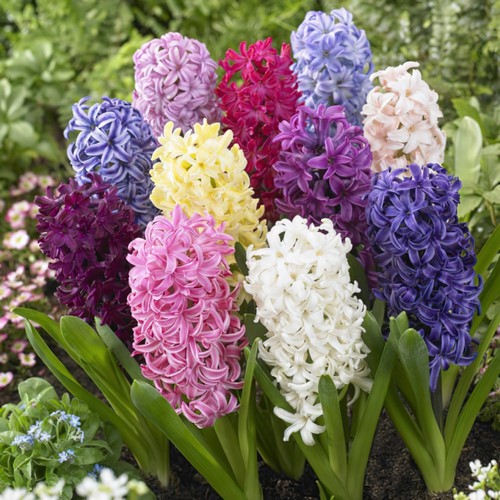 Image source: bostonbulbswholesale
Image source: bostonbulbswholesale
In the language of flowers, hyacinths have a decidedly playful overtone. They represent games, playful joy, rashness, and sport. They can also show an apology, particularly purple hyacinths.
3. Cyclamens
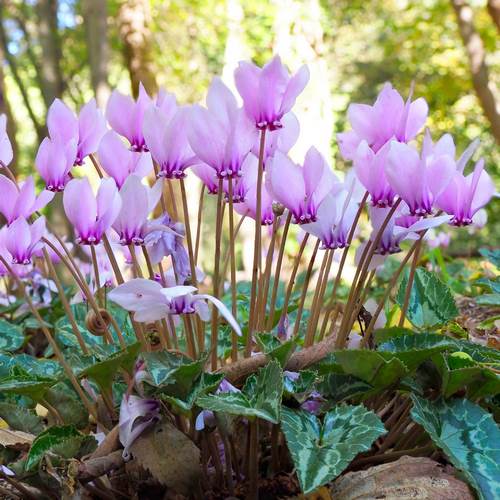 Image source: easytogrowbulbs
Image source: easytogrowbulbs
These native flowers of the Mediterranean area, with their bowed heads, also hold physical hints as to their meaning. The symbolism of the cyclamen is resignation or farewell.
4. Lilies
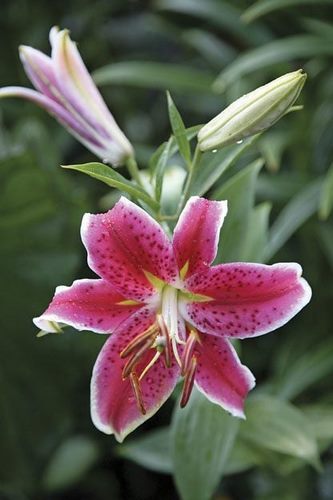 Image source: birdsandblooms
Image source: birdsandblooms
Lilies can convey a whole host of messages, depending on their type and color. The overall message, however, is one of chastity, virtue, majesty, beauty, faith, wisdom, pride and chivalry.
5. Roses
 Image source: homegardenandhomestead
Image source: homegardenandhomestead
One can hardly discuss flower meanings without a discussion of the many varied meanings in roses. As with several others, roses can mean a whole host of things depending on color and other factors. Although known for being a symbol of love, passion and perfection, many other overtones and meanings can be conveyed.
Burgundy Rose – beauty within; hidden beauty
Coral Rose – desire
Lavender Rose – enchantment; love at first sight
Rose Leaf – “you may hope”
Moss Rose – confession of love
Orange Rose – enthusiasm or fascination
Peach Rose – admiration, appreciation, and gratitude; or modesty
Pink Rose – happiness, thankfulness, appreciation, gladness, friendship, sympathy
Red Rose – love, passion, beauty, remembrance, courage
White Rose – purity, innocence, friendship, virtue
Yellow Rose – joy, friendship; but also jealousy or slighted love
Red and White Roses – unity
Red and Yellow Roses – congratulations
Yellow and Orange Roses – passion
Thornless Rose – love at first sight
6. Chrysanthemum
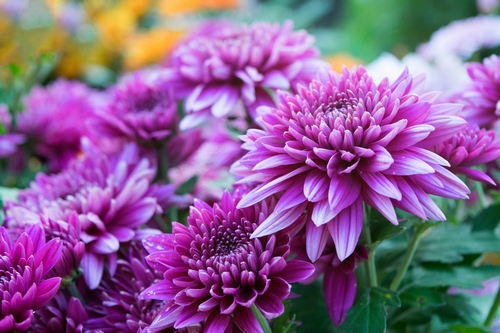 Image source: ehow
Image source: ehow
The birth flower of November, the chrysanthemum’s overall message is one of happiness, cheerfulness, joy, and optimism. There are subtler meanings to some of the colors.
Red Chrysanthemum – a declaration of love, a simple statement of ‘I love’
White Chrysanthemum – truth and loyal love
Yellow Chrysanthemum – slighted love
7. Irises
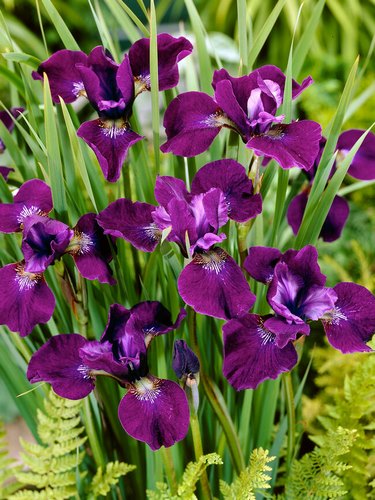 Image source: bluestoneperennials
Image source: bluestoneperennials
Irises have a very noble symbolism; they represent wisdom, faith, hope, valor, and valued friendship. They can also mean ‘my compliments’, or a promise in love.
8. Orange Blossoms
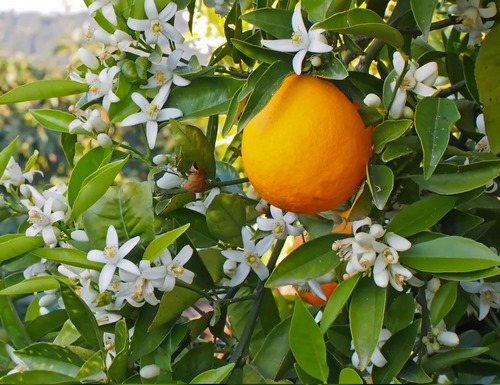 Image source: twinings
Image source: twinings
Orange blossoms have long been popular in wedding flower arrangements, and for good reason; the symbolism behind them are messages of purity, eternal love, innocence, marriage, and fruitfulness.
9. Azaleas
 Image source: plantinfo
Image source: plantinfo
As with many flowers, the overtone of azaleas has to do with love, but it is a message of fragile passion, temperance, and a subtle plea to take care of one’s self for the sender. They are also a symbol of womanhood in China.
10. Tulips
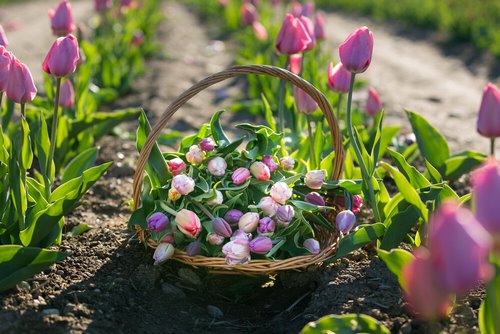 Image source: ferjulians
Image source: ferjulians
The primary messages of tulips are of fame and perfect love. As with other flowers, the colors each have their emphasis.
Red Tulips – declaration of love, or a plea for the recipient to believe the sender
Yellow Tulips – “there’s sunshine in your smile”; also hopeless love
Cream Tulips – “I will love you forever”
Variegated Tulips – says the recipient has beautiful eyes
11. Gladiolus
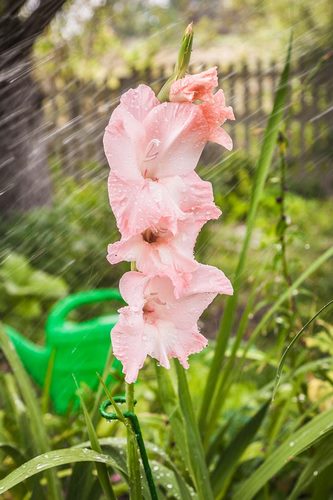 Image source: gardenerspath
Image source: gardenerspath
Named for their leaves which resemble swords, or “gladius” in Latin; one of its meanings is also based on this, telling the recipient that she pierces the heart like a sword. It also represents strength of character, preparedness, sincerity, and love at first sight.
12. Baby’s Breath
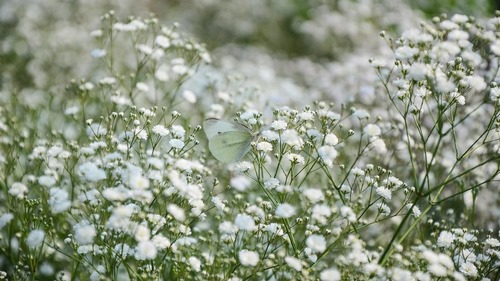 Image source: bunnings
Image source: bunnings
Just looking at this tiny, delicate white flower and at its name gives a good hint as to its meaning. Although it is now commonly used as a ‘filler’ for bouquets and other arrangements, it has its meaning in and of itself. It symbolizes purity of heart and innocence.
13. Violets
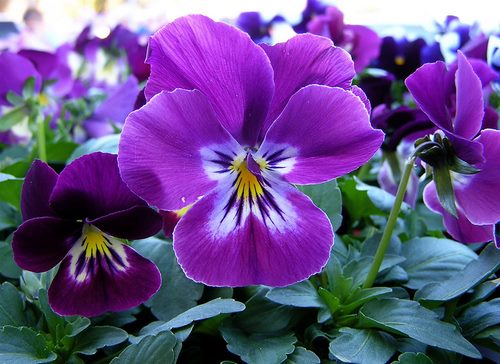 Image source: atozflowers
Image source: atozflowers
Violets represent modesty, faithfulness, understated beauty, affection, “you’re in my thoughts”, innocence. they can also be a sort of plea, to take a chance on happiness.
14. Daffodils
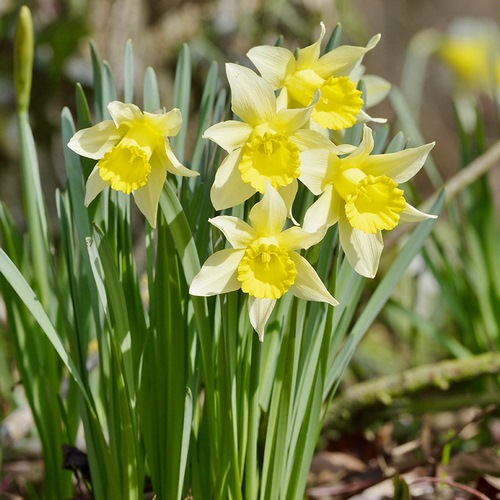 Image source: woodland-bulbs
Image source: woodland-bulbs
The birth flower of March, the daffodil has several possible meanings to choose from. Rebirth and new beginnings are perhaps the most obvious for this early-blooming flower. Also included are regard, chivalry, unrequited love, and eternal life. A single daffodil can also carry a message of misfortune.
15. Carnations
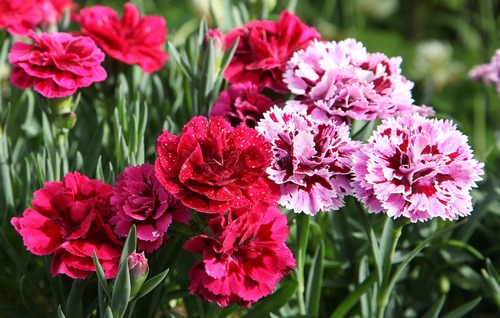 Image source: masterclass
Image source: masterclass
There are several flowers who have an overall meaning, and then a separate meaning for individual colors; the carnation is one such. The overall meanings include fascination, distinction, impulsiveness, joy, and divine or devoted love. It is also the birth flower for January.
Pink Carnation – symbolic of enduring love, particularly with a maternal overtone
Purple Carnation – capriciousness, unpredictability
Red Carnation – admiration, pride, fascination, and an aching heart
White Carnation – these flowers have a twofold message. On the one hand, they symbolize innocence, sweetness, and purity. On the other hand, they represent pure or ardent love, and the strength and enduring qualities of love.
Striped Carnation – refusal, but regretful, without bitterness.
-
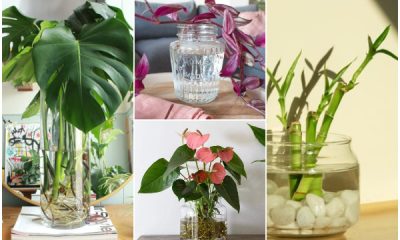
 GARDEN10 tháng ago
GARDEN10 tháng ago15 Houseplants That Grow Well in Vases with Water
-

 GARDEN1 năm ago
GARDEN1 năm ago4 Easiest Ways to Get Free Plants
-

 FUNNY1 năm ago
FUNNY1 năm ago20 Funny Grammar Fails That Will Make You Laugh All Day
-

 FUNNY1 năm ago
FUNNY1 năm ago30 Funny and Perplexing Photos That Make You Laugh All Day
-

 GARDEN11 tháng ago
GARDEN11 tháng ago30 Shimmering Side Yard Landscape Ideas
-

 ANIMALS1 năm ago
ANIMALS1 năm agoBritish Angler Caught Huge 67-Pound Goldfish in the World
-

 FUNNY1 năm ago
FUNNY1 năm ago30 Weirdest Things That People Came Across On The Subway
-

 ANIMALS1 năm ago
ANIMALS1 năm agoMore Than 3 Million People Baffled by Video of Strange Figure on the Beach



